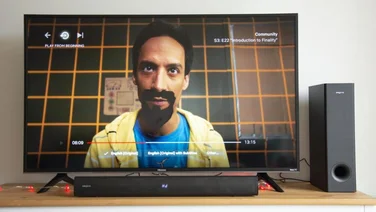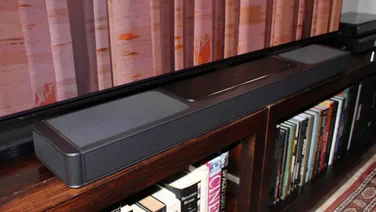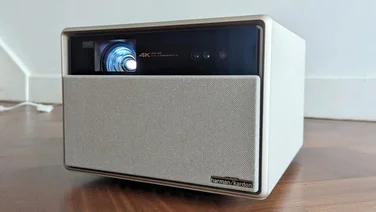To help us provide you with free impartial advice, we may earn a commission if you buy through links on our site. Learn more

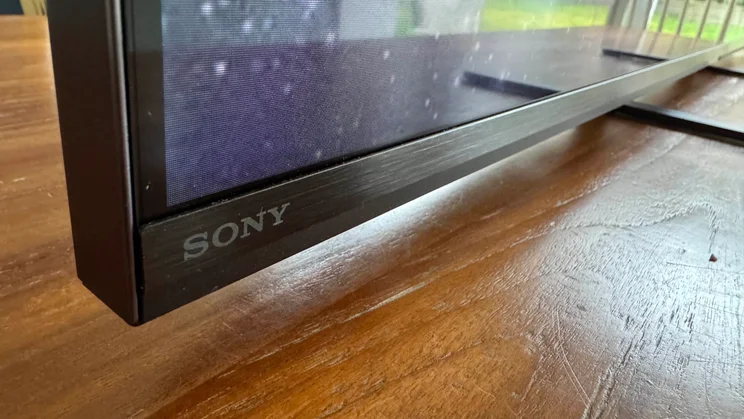
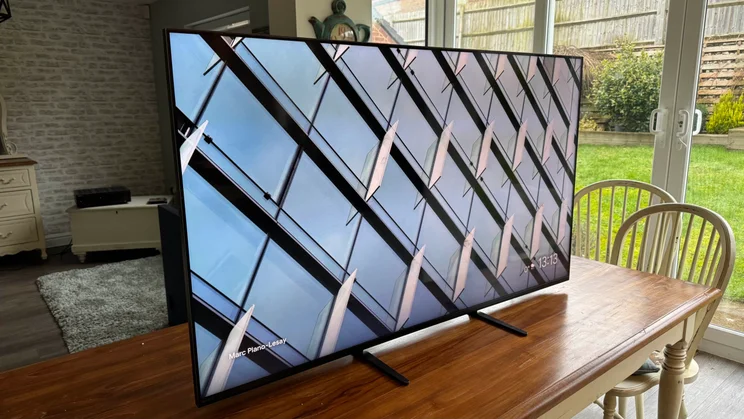
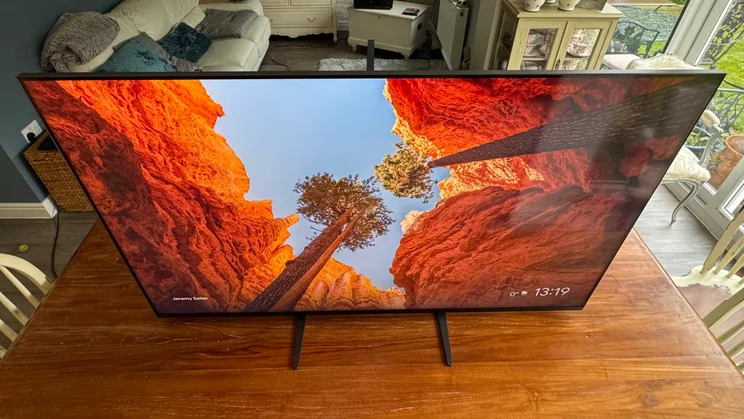
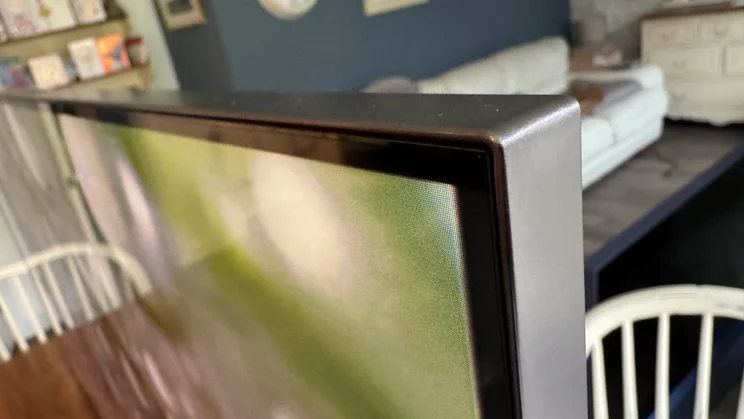
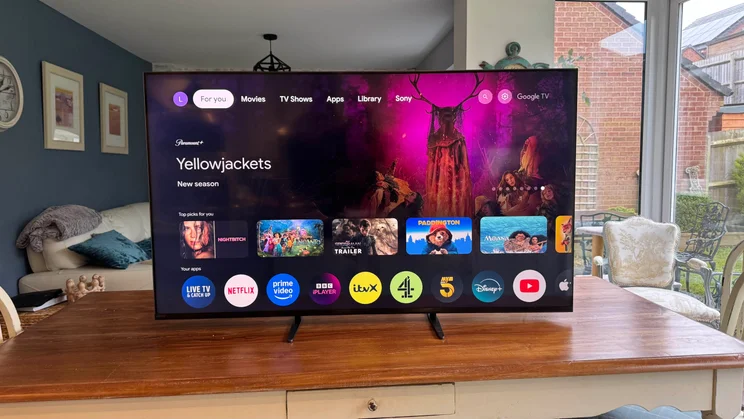
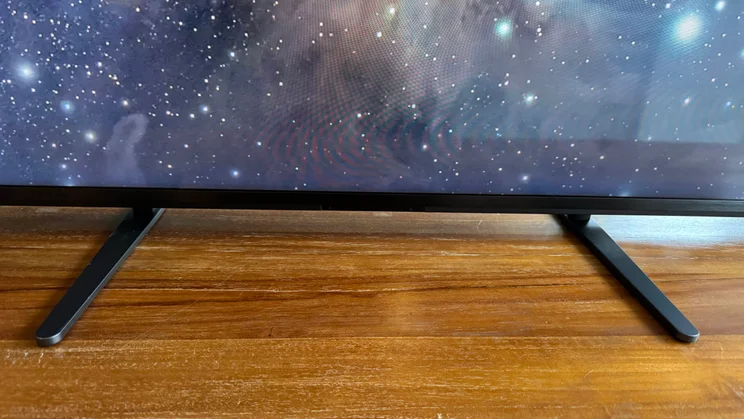
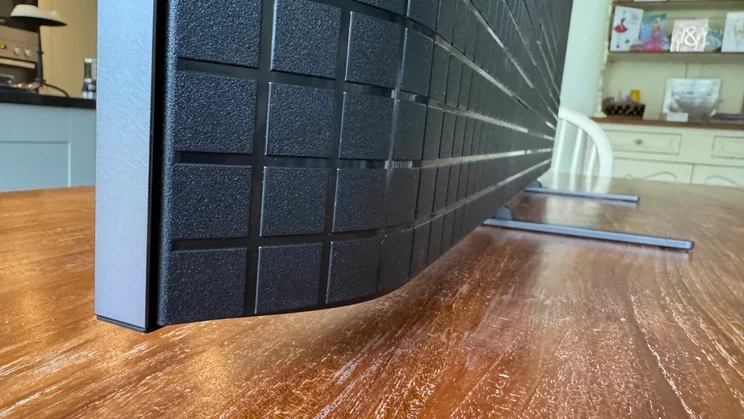
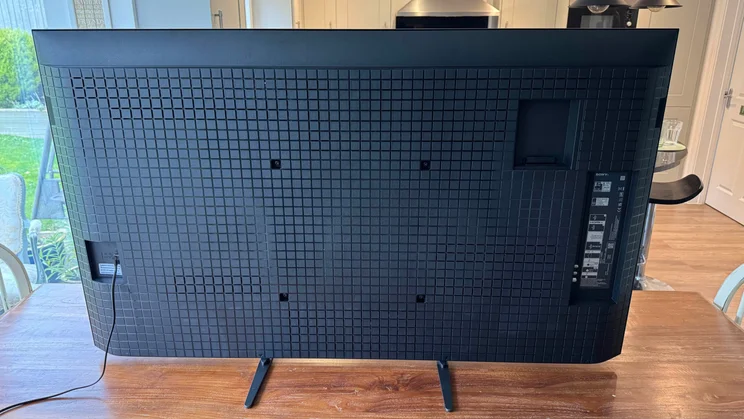
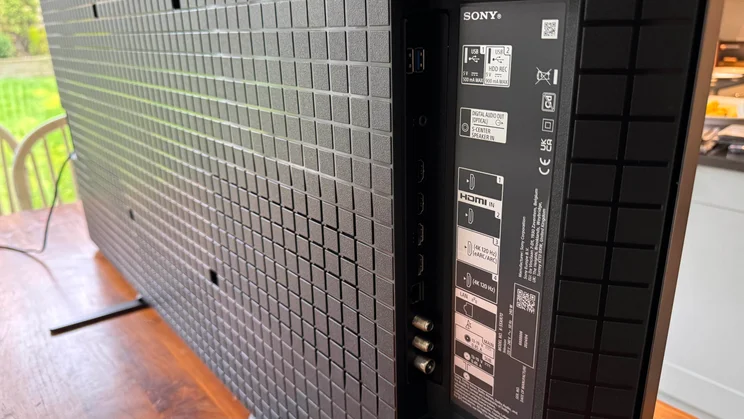
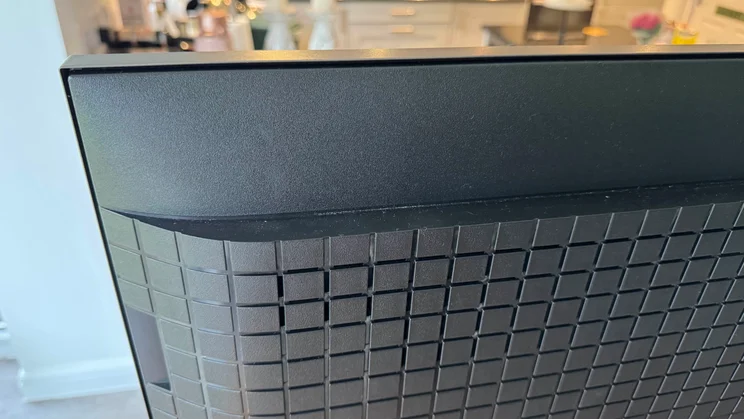
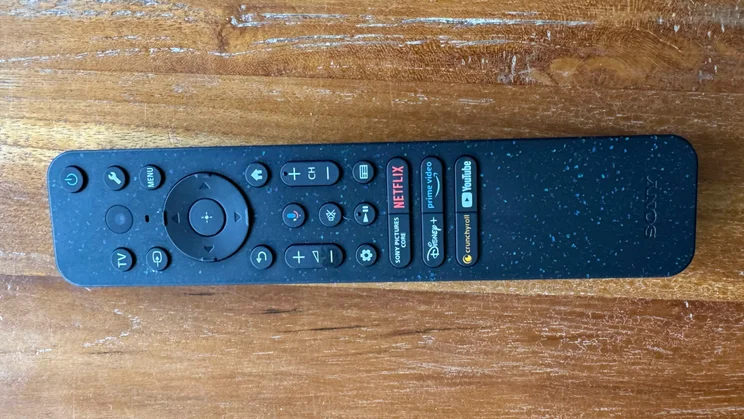
- Spectacular brightness and colour
- Exceptional local dimming control
- Strong built-in audio
- It’s expensive for an LCD TV
- Only two HDMIs support full 2.1 features
- Blooming with off-axis viewing
While most brands with feet in both the LCD and OLED TV camps favour OLED as their most premium proposition, Sony leans the other way. Under the hierarchy established by Sony’s TV model numbering system, the top slot belongs to the Bravia 9 series, a range that includes 65in, 75in and 85in Mini LED options.
Going for Mini LED lighting enables Sony to continue pursuing its previously stated belief in the importance of brightness to a compelling HDR experience. Crucially, though, the Bravia 9 also sees Sony taking on the disadvantage LCD has versus OLED screens when it comes to localised light controls by introducing a brand new XR Backlight Master Drive panel design. Can this high-tech new LCD approach take on the remarkable efforts of the latest premium OLED TVs, though, or is Sony barking up the wrong tree?
Sony Bravia 9 review: Key specifications
| Screen sizes available: | 65in K65XR90, 75in K75XR90 and 85in K85XR90 |
| Panel type: | VA-type LCD with Mini LED backlight |
| Resolution: | 4K/UHD (3,840 x 2,160) |
| Refresh rate: | 120Hz |
| HDR formats: | HDR10, HLG, Dolby Vision |
| Audio enhancement: | 70W sound system, Dolby Atmos and DTS:X decoding, Voice Zoom 3, 3D Surround Upscaling, Acoustic Multi-Audio+ Acoustic Centre Sync |
| HDMI inputs: | 2 x HDMI 2.1, 2 x HDMI 2.0 |
| Freeview Play compatibility: | No |
| Tuners: | Terrestrial Freeview HD |
| Gaming Features: | 4K/120Hz, ALLM, VRR, Perfect for PlayStation features |
| Wireless connectivity: | Wi-Fi, Bluetooth 5.3, Chromecast built-in, Apple AirPlay 2, HomeKit |
| Smart assistants: | Google Assistant, works with Apple HomeKit |
| Smart platform: | Google TV |
What you need to know
The Sony Bravia 9 is a 4K HDR LCD TV illuminated by Mini LED lighting that’s controlled by a newly designed local dimming system featuring more than 1,500 separately controllable LED zones (according to my attempts to count them on the 65in screen I tested). It sits at the top of Sony’s current TV tree, though pricing is currently comparable, at least with some screen sizes, with Sony’s recently released Sony Bravia 8 II OLEDs.












Sony’s top-line Bravia XR system provides picture processing, and Sony bills the Bravia 9 as its ‘brightest 4K TV ever’, reminding you of the importance of brightness to Sony’s HDR vision.
Its groundbreaking pictures are joined by a powerful version of Sony’s Acoustic Multi-Audio+ sound system, while smart features are provided by Google TV.
Price and competition
The 65in, 75in and 85in models in the Bravia 9 range are available for £2,599, £2,999 and £3,799 respectively. These are all premium prices for LCD TVs in today’s market, but they’re not out of the way for the sort of rival flagship OLED TVs that Sony isn’t afraid to go up against. These OLED options include the Sony Bravia 8 II, which, like Samsung’s S95F, uses quantum dot OLED panels across its various screen sizes.
There’s also the LG G5 OLED, which uses new Primary RGB Tandem OLED panel technology to take both brightness and colour volumes to places we’d once never imagined WRGB OLED panels would be able to reach. The LG G5 is a good few hundred pounds dearer than the Bravia 9 at the time of writing, though, leaving the mid-range LG C5 OLED models as the Bravia 9’s closest contenders on a pound-for-pound basis.
The most premium 4K LCD alternative to the Bravia 9 this year is Samsung’s QN90F, which also combines a thousand-plus dimming zones with high brightness levels.
Design, connections and control
The Bravia 9 is no shrinking violet. Its all-new backlight engine seems to need plenty of room to do its thing, resulting in an unusually chunky rear by today’s flagship TV standards. The TV is unusually heavy by modern standards, too.
None of this means it’s at all ugly, though. Build quality is outstanding, the deep side panels enjoy an opulent deep grey brushed metallic finish, and the rear panels feature an appealing crosshatch pattern etched into them that’s become something of a Sony trademark.












Unlike some Sony TVs, the heavy-duty metal feet the Bravia 9 ships with can be placed in multiple positions. They’re at their most elegant placed under the screen’s bottom corners, with the screen sitting down low on them. But you can also lift the screen using the feet to make room for a soundbar, or you can move the feet closer together if you want to put the TV on a relatively narrow bit of furniture. You can also wall mount the set if you’re brave enough.
The Bravia 9’s connections are solid rather than amazing for a flagship TV. It has four HDMIs, as you would expect, but only two of these HDMIs are capable of handling variable refresh rates, Auto Low Latency Mode (ALLM) switching, and 4K at frame rates up to 120Hz.












Other connections include USB ports for multimedia media playback, an unusual S-Center port that enables the TV to become the centre channel speaker in a wider Sony speaker system, and Bluetooth and Wi-Fi support.
The Bravia 9 can be controlled in three main ways. First, you can use either of the two remote controls Sony provides, one of which is a slim, relatively stripped-back affair, while the other is a chunkier, more crowded old-school option. You can also simply tell the TV what to do thanks to its support for Google Assistant voice recognition, or, finally, you can control the TV via the Bravia Connect app for iOS or Android.
Smart TV platform
As usual with Sony TVs, the Bravia 9 uses Google TV for its smart services. This is a more intuitive and attractive interface than its Android predecessor, and Sony has done a nice job of integrating its own distinctive, unusually graphics-rich menus.












Sony has also managed to onboard all the UK’s main terrestrial channel catch-up services, getting round this blind spot of the Google TV platform. All the key global video streaming platforms are now available on Google TV via one route or another, and it’s possible to Chromecast directly to the TV without any software side-loading. Apple AirPlay works too.
Image quality
While the Bravia 9 sports an extensive selection of picture presets, most users will want to stick with either the relatively punchy Standard mode, which pushes pictures to take advantage of the Mini LED screen’s more extreme capabilities, or the more accuracy-based Professional mode.
Focusing on the Standard mode first, Sony’s desire to show off what its top TV can do even with SDR content finds the Bravia 9 applying an HDR conversion system that you can’t turn off. Not surprisingly, this has a fairly substantial impact on measured accuracy, but this doesn’t mean the resulting images aren’t still supremely watchable.
Brightness in standard mode with SDR content hovers around 500cd/m2 – well over twice what standards dictate it should be. Calman Ultimate’s ColorChecker, Saturation Sweep, and Luminance Sweep tests record average Delta E 2000 errors of 18.9, 7.3 and 5.4, respectively, as well as an average error of 10 on a multipoint grayscale Calman test. These figures are all well above 3, which is the level at which errors potentially become visible to the human eye.












This SDR to HDR conversion didn’t result in me finding Standard mode pictures uncomfortable to watch. On the contrary, both colour tones and brightness levels always feel beautifully balanced despite the natural ranges of the source content being artificially expanded, and nothing ever starts to look gaudy, forced or noisy.
The HDR conversion isn’t as aggressive as similar efforts I’ve seen from other brands, but this is part of its appeal, as it allows Sony to deliver a beautifully coherent and nuanced ‘upgraded’ SDR image that still somehow feels true to the source.
If you are adamant that watching things exactly as they were created is the only way to go, the Bravia 9’s Professional picture setting nails that brilliantly. A right in the zone 129-nit core white level combines with a 2.5 average DeltaE 2000 error for Calman’s multipoint greyscale test, plus error averages of just 3, 2.5 and 2.2 for ColorChecker, Saturation Sweep and Luminance Sweep tests.












These measurements were all recorded in Professional Mode without any manual intervention required, and they result in an image that looks fantastically nuanced and refined. There’s no hint of the greyness in dark scenes or flat feel to colours that other LCD TVs can exhibit in their most accurate picture presets.
Wrapping up what’s an imperious SDR/HD performance in at least two of its picture modes is one of the very best upscaling engines in the business, which turns HD into the screen’s UHD resolution with a gorgeous combination of naturalism and extra image density.
HDR performance
Outstanding though it is with SDR sources, the Bravia 9 was built with high dynamic range video in mind. So it’s no great surprise that this is where it makes its mark.
For starters, it’s phenomenally bright. In its most accurate Professional picture mode, it hit 2,500cd/m2 on a 1% window, and gets within a whisker of 3,000cd/m2 on a 10% window. These figures drop 100 nits in the set’s Standard mode due to this mode’s more aggressive use of local dimming, but every brightness result I got out of the Bravia 9 puts it in the ‘spectacular’ category. Especially as these brightness peaks are delivered by a local dimming system that does a class-leading job of suppressing backlight clouding and blooming.












This freedom from blooming is achieved without Sony’s processing dimming bright highlights. The result is a phenomenal sense of local contrast that feels almost OLED-like. But even the latest flagship OLED technologies can only dream about the measured brightness levels of around 800cd/m2 with full-screen bright HDR signals that the Bravia 9 achieved.
Add to all the above the Bravia 9’s ability to retain outstanding amounts of shadow detail and bring out subtleties in the brightest parts of HDR images, and you’ve got the most balanced, consistently natural-looking but also fantastically punchy LCD lighting system around.
Sony’s latest Cognitive XR processor feeds the Bravia 9’s brightness and light control into a beautiful quantum dot-enhanced colour range that enjoys immense volume and seemingly infinite subtlety when colour shifts of fine colour blends. Add to this the processor’s remarkable ability to subtly reconstruct images so that they more closely resemble the way our eyes see the real world, and you’ve got an image that feels incredibly three-dimensional and involving.












Further Calman Ultimate testing shows the Bravia 9 capable of delivering just over 95% of the DCI-P3 colour spectrum used in most HDR mastering, as well as more than 78.5% of the wider BT.2020 gamut.
These are both strong results for an LCD TV, and they’re backed up by some phenomenal accuracy in the TVs’ Professional mode. Delta E 2000 errors averaged just 1.9 for Calman’s Colorchecker test, 1.7 for Calman’s ColorMatch HDR test, and 4 for Calman’s Multipoint Grayscale test. The image tracks the HDR EOTF curve with exceptional accuracy in Professional mode, too, bar a touch of overshoot at the very brightest end.
The precision of the Bravia 9’s light and colour handling plays into a stellar sense of sharpness and detail with native 4K images. This holds up brilliantly when there’s motion in the frame, thanks to a combination of what appears to be an exceptionally fast-responding panel design and Sony’s always-excellent motion handling (when using the CineMotion processing mode or a Custom Motionflow setting with the smoothness and clearness elements set low).












Not even a TV as accomplished as the Bravia 9 can claim absolute perfection, of course. So, for starters, while its viewing angles are very good where colour and contrast retention are concerned, you can see more backlight blooming around bright objects if you’re more than 25 degrees or so off-axis. Also, while the filter Sony has placed over the screen to suppress reflections works well overall, it can cause a little rainbowing around extremely bright point-source reflections.
Very aggressively mastered HDR content can occasionally cause the usually masterful backlight controls to draw a little too much attention to themselves, and finally, skin tones can look a little too warm using some of the out-of-the-box presets. These can be sorted out fairly easily with a little judicious tweaking of the Bravia 9’s extensive colour adjustment features, though.
All that ultimately matters about the Bravia 9’s pictures, though, is that, especially with HDR, you’ll be far too busy gawping in wonder to even notice the occasional puny niggle.
To test the Sony Bravia 9, I used Portrait Displays Calman colour calibration software.
Gaming
The Bravia 9’s gaming features are solid, but don’t match the massive gaming support now offered by premium TVs from Samsung, LG and TCL. So, as well as only two of the TV’s HDMI ports supporting the latest premium gaming features such as 4K at 120Hz, VRR and ALLM, there’s no support for higher frame rates than 120Hz. Nor is there any support for the AMD Freesync or Nvidia G-Sync VRR formats supported by a few other TV brands.












The set does carry a gaming bonus for PlayStation 5 owners, though, in the shape of a feature that enables the console to automatically detect which Sony TV it’s connected to and output its HDR output accordingly.
Its dazzling brightness, contrast, colour and sharpness make the Bravia 9 a pretty great gaming display despite its slight feature limitations. The 17.1ms the Bravia 9 takes to render 60Hz graphics in the Game preset is a little higher than the sub-10ms figures being recorded now by some of its rivals, but I wouldn’t say 60Hz gaming felt laggy. And the lag halves with 120Hz feeds of the sort now supported by many of today’s response time-based games.
Sound quality
The Bravia 9’s audio isn’t quite as brilliant as its pictures, but it’s still a substantial cut above the TV sound system norm.
Looking at its limitations first, the TV’s chassis can buzz slightly during the most sustained and deep-throated rumble sounds, while at the other end of the spectrum, high-pitched ambient sounds can sound a touch exposed.












On the upside, the Acoustic Multi-Audio+ system uses its 70W of power fed into an array of speakers that include Frame and Beam tweeters to create a soundstage that’s far bigger than the TV itself. There’s height and depth as well as width to the soundstage, making it very effective at placing Dolby Atmos or DTS:X sound effects in what usually feels like just the right place on or off the screen.
Acoustic Multi-Audio+ isn’t quite as precise in this respect as the Acoustic Surface used on Sony OLEDs, but it’s more than good enough to make detailed and busy sound mixes sound convincing and immersive. Especially as there’s a decent sense of forwardness to the sound, rather than everything sounding as if it’s happening behind the screen. Bass is more present and, usually, cleaner and compelling than it is with most integrated TV sound systems, too, while even the highest trebles avoid sounding thin or brittle.
Verdict
Sony’s Bravia 9 provides the most potent proof yet that a premium home cinema performance doesn’t have to be based around an OLED screen.
Its ground-breaking LCD screen was expressly designed to offer consumers a TV capable of pushing closer to the sort of uncompromising picture extremes now being achieved by the brand’s latest professional mastering monitor. The result is a TV that’s almost uniquely equipped to deliver jaw-dropping spectacle and breathtaking accuracy.
It even sounds good, and a standout Mini LED flagship I’ve tested. It costs less than my two favourite OLEDs of the year so far – the Samsung S95F and LG G5 OLED – and delivers higher full-screen brightness, but its more limited gaming features and blooming when viewed off-axis see it narrowly miss out on our Best Buy award.



